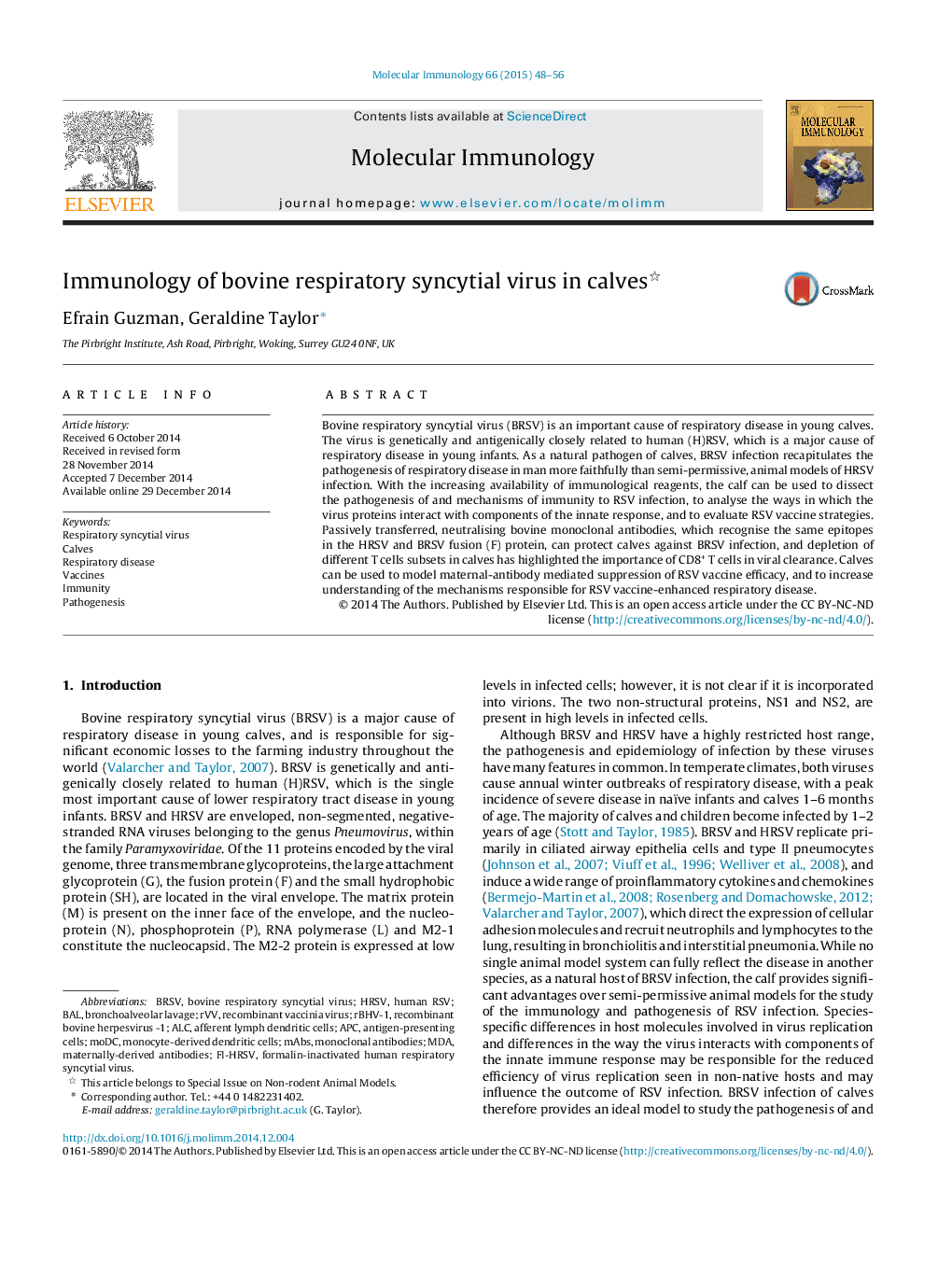| کد مقاله | کد نشریه | سال انتشار | مقاله انگلیسی | نسخه تمام متن |
|---|---|---|---|---|
| 5916747 | 1163755 | 2015 | 9 صفحه PDF | دانلود رایگان |
- BRSV in calves can be used as a model for RSV infection in infants.
- As a natural host, BRSV interacts with PPRs in bovine cells in an authentic way.
- The calf model of BRSV can be used to dissect mechanisms of immunopathogenesis.
- F-specific, neutralising antibodies and CD8+ T cells are important in protection.
- Lymphatic cannulation of calves can be used to analyse regional immune responses.
Bovine respiratory syncytial virus (BRSV) is an important cause of respiratory disease in young calves. The virus is genetically and antigenically closely related to human (H)RSV, which is a major cause of respiratory disease in young infants. As a natural pathogen of calves, BRSV infection recapitulates the pathogenesis of respiratory disease in man more faithfully than semi-permissive, animal models of HRSV infection. With the increasing availability of immunological reagents, the calf can be used to dissect the pathogenesis of and mechanisms of immunity to RSV infection, to analyse the ways in which the virus proteins interact with components of the innate response, and to evaluate RSV vaccine strategies. Passively transferred, neutralising bovine monoclonal antibodies, which recognise the same epitopes in the HRSV and BRSV fusion (F) protein, can protect calves against BRSV infection, and depletion of different T cells subsets in calves has highlighted the importance of CD8+ T cells in viral clearance. Calves can be used to model maternal-antibody mediated suppression of RSV vaccine efficacy, and to increase understanding of the mechanisms responsible for RSV vaccine-enhanced respiratory disease.
Journal: Molecular Immunology - Volume 66, Issue 1, July 2015, Pages 48-56
